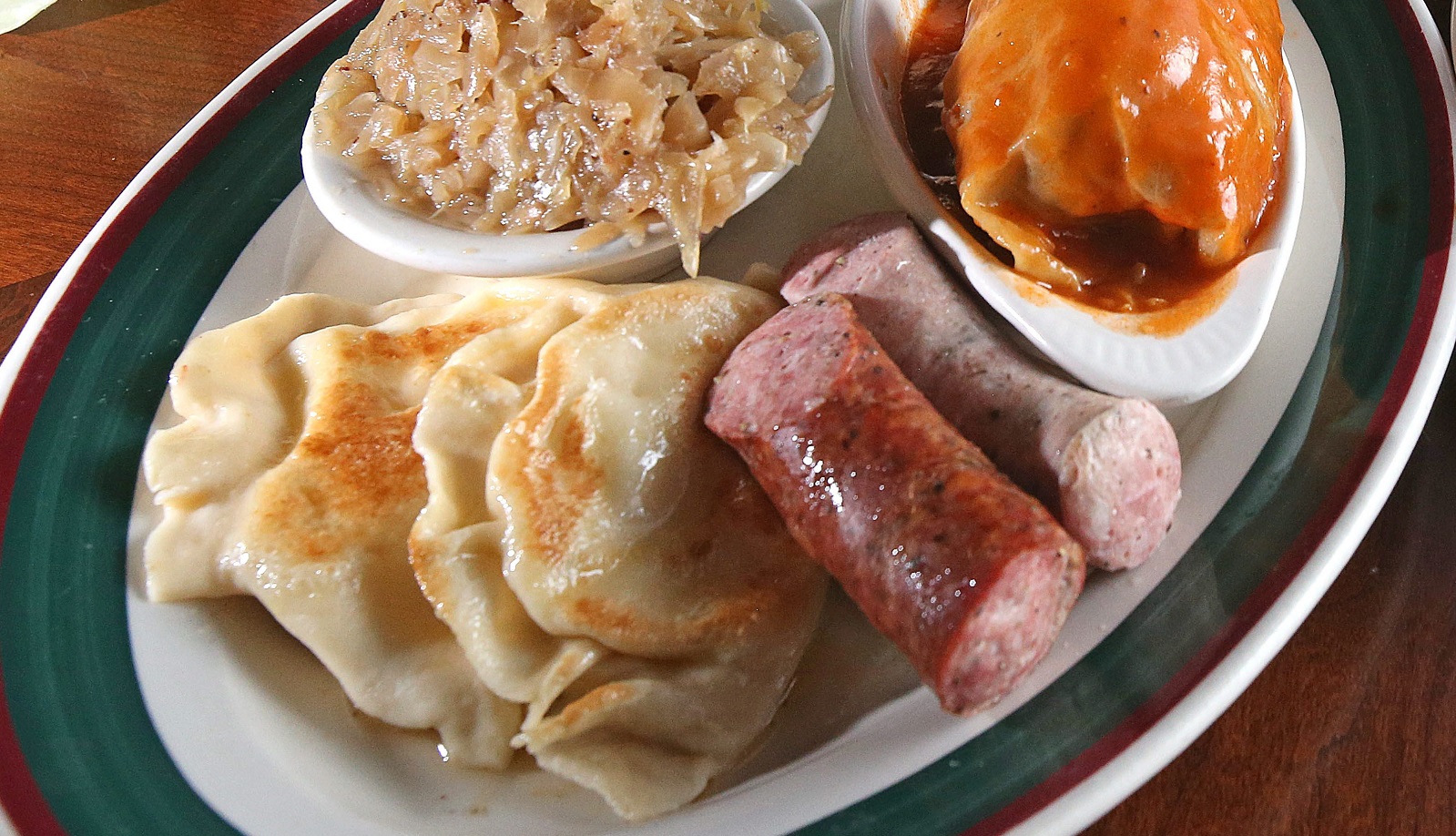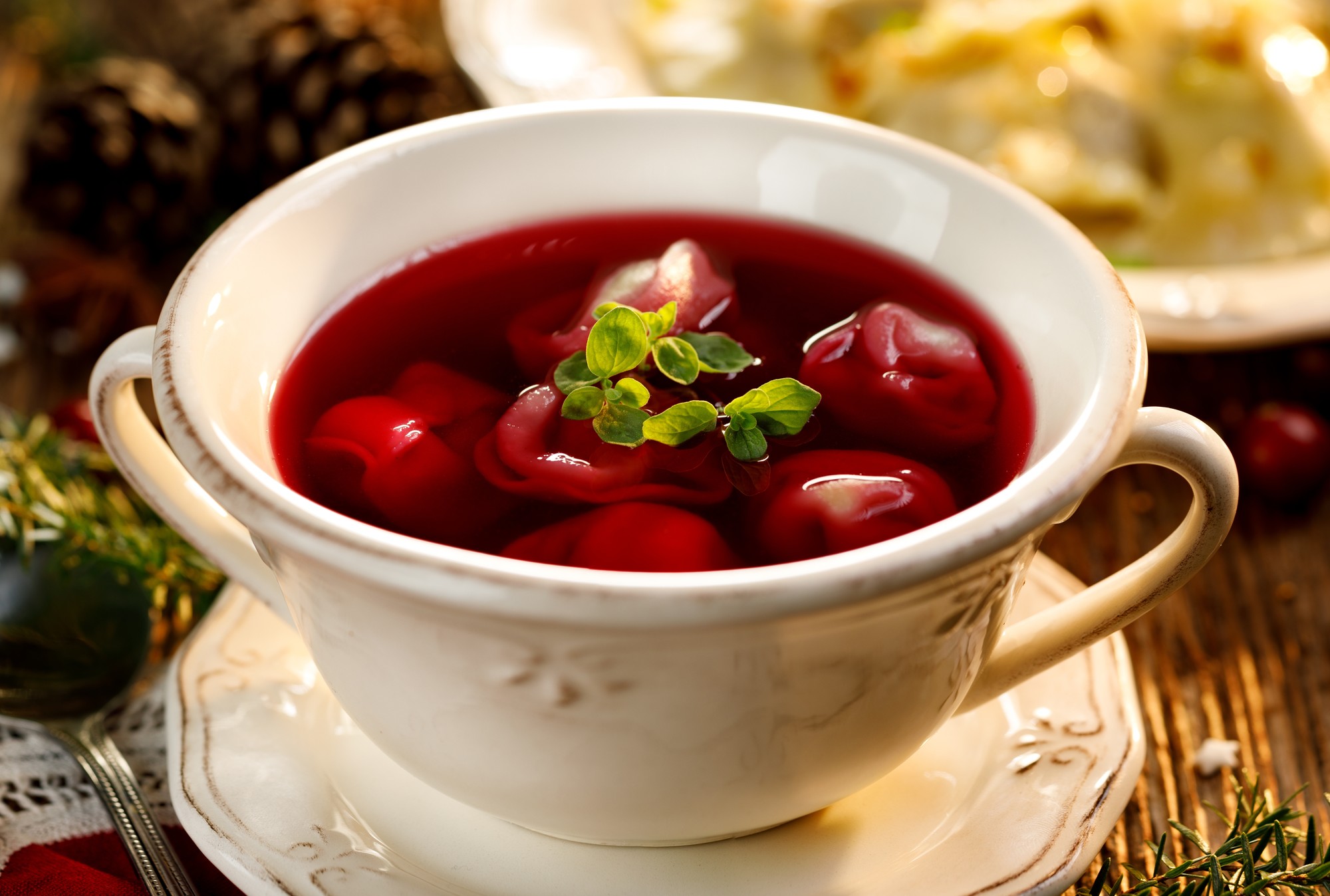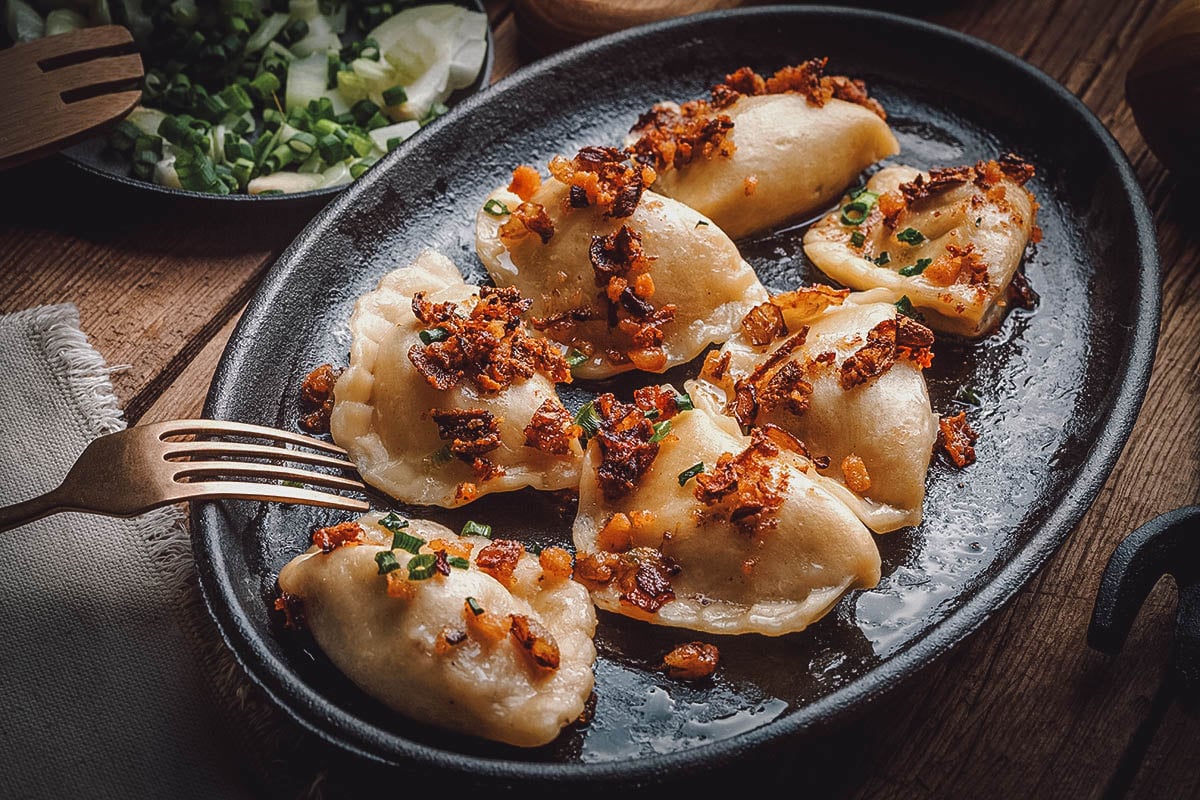What is Polish Food?
Polish food is a diverse and flavorful cuisine that has been influenced by many different cultures over the centuries. It is known for its use of fresh, seasonal ingredients and its hearty, comforting dishes.
Some of the most popular Polish dishes include pierogi, which are dumplings filled with meat, cheese, or vegetables; bigos, which is a hunter's stew made with cabbage, meat, and vegetables; and gobki, which are cabbage rolls filled with meat and rice.
- Maine Cabin Masters Season 10 New Adventures Await
- 1975 Chinese Zodiac Year Of The Rabbit Traits More
Polish food is also known for its use of spices, such as dill, caraway, and marjoram. These spices give Polish dishes their characteristic flavor and aroma.
Polish food is a delicious and satisfying cuisine that is enjoyed by people all over the world. It is a cuisine that is rich in history and culture, and it is sure to please even the most discerning palate.
Polish Food
Polish food is a diverse and flavorful cuisine that has been influenced by many different cultures over the centuries. It is known for its use of fresh, seasonal ingredients and its hearty, comforting dishes.
- Dumplings
- Stews
- Cabbage rolls
- Spices
- History
- Culture
These key aspects highlight the different dimensions of Polish food, from its popular dishes to its cultural significance. Polish dumplings, for example, are a beloved dish that can be filled with a variety of ingredients, such as meat, cheese, or vegetables. Polish stews are another popular dish, often made with cabbage, meat, and vegetables. Cabbage rolls are another Polish staple, made with cabbage leaves that are stuffed with meat and rice. Spices are also an important part of Polish cuisine, with dill, caraway, and marjoram being some of the most commonly used. Finally, Polish food has a rich history and culture, with many dishes being passed down through generations.
1. Dumplings
Dumplings are a type of food that is made from a dough that is wrapped around a filling. Dumplings can be boiled, steamed, fried, or baked. They are a popular dish in many cultures around the world, including Poland.
Polish dumplings are typically made with a dough that is made from flour, water, and eggs. The dough is then wrapped around a filling that can include meat, cheese, vegetables, or fruit. Polish dumplings are often served with a sauce or gravy.
Dumplings are a popular dish in Poland because they are relatively easy to make and they are a hearty and filling meal. Dumplings can also be made ahead of time and reheated when you are ready to eat them.
Here are some of the most popular types of Polish dumplings:
- Pierogi: Pierogi are a type of dumpling that is filled with meat, cheese, or vegetables. They are typically boiled and then served with a sauce or gravy.
- Uszka: Uszka are a type of dumpling that is filled with mushrooms and sauerkraut. They are typically served in a clear broth.
- Kluski: Kluski are a type of dumpling that is made from a dough that is made from flour, water, and eggs. They are typically boiled and then served with a sauce or gravy.
Dumplings are a delicious and versatile dish that can be enjoyed by people of all ages. They are a popular dish in Poland and are a great way to experience Polish culture.
2. Stews
Stews are a type of dish that is made by slowly cooking meat, vegetables, and sometimes other ingredients in a liquid. Stews are a popular dish in many cultures around the world, including Poland.
Polish stews are typically made with a variety of ingredients, including meat, vegetables, and spices. The most common type of meat used in Polish stews is pork, but beef, chicken, and lamb are also used. The most common vegetables used in Polish stews are cabbage, potatoes, carrots, and onions. Polish stews are often flavored with spices such as dill, caraway, and marjoram.
Polish stews are typically served with a side of bread or potatoes. They can also be served with a dollop of sour cream or yogurt.
Stews are a popular dish in Poland because they are relatively easy to make and they are a hearty and filling meal. Stews can also be made ahead of time and reheated when you are ready to eat them.
Here are some of the most popular types of Polish stews:
- Bigos: Bigos is a type of stew that is made with cabbage, meat, and vegetables. It is typically cooked for several hours and is often served with a side of bread or potatoes.
- Gulasz: Gulasz is a type of stew that is made with beef, vegetables, and spices. It is typically cooked for several hours and is often served with a side of bread or potatoes.
- Ros: Ros is a type of stew that is made with chicken, vegetables, and noodles. It is typically served as a soup.
Stews are a delicious and versatile dish that can be enjoyed by people of all ages. They are a popular dish in Poland and are a great way to experience Polish culture.
3. Cabbage rolls
Cabbage rolls are a popular dish in Polish cuisine, made from cabbage leaves that are stuffed with a filling of meat, rice, and vegetables. They are typically served with a tomato sauce or gravy.
- History and Origin
Cabbage rolls have a long history in Polish cuisine, dating back to the 16th century. They are thought to have originated in the eastern part of Poland, where cabbage was a staple crop. Cabbage rolls were originally a peasant dish, but they eventually became popular among all social classes.
- Cultural Significance
Cabbage rolls are a symbol of Polish hospitality and generosity. They are often served at special occasions, such as weddings and Christmas. Cabbage rolls are also a popular dish to serve to guests.
- Regional Variations
There are many different regional variations of cabbage rolls in Poland. In the eastern part of the country, cabbage rolls are typically filled with buckwheat groats instead of rice. In the southern part of the country, cabbage rolls are often made with sauerkraut instead of fresh cabbage.
- Preparation
Cabbage rolls are relatively easy to make, but they do require some time and effort. The first step is to blanch the cabbage leaves. This involves boiling them for a few minutes until they are soft and pliable. Once the cabbage leaves are blanched, they are filled with the desired filling and then rolled up. The cabbage rolls are then placed in a baking dish and baked in the oven until they are cooked through.
Cabbage rolls are a delicious and versatile dish that can be enjoyed by people of all ages. They are a popular dish in Poland and are a great way to experience Polish culture.
4. Spices
Spices play a vital role in Polish cuisine, adding flavor and complexity to many dishes. The most commonly used spices in Polish cooking include:
- Dill
Dill is a versatile herb that is used in both fresh and dried form. It has a slightly sweet and slightly bitter taste and is often used to flavor soups, stews, and salads.
- Caraway
Caraway is a spice that is made from the seeds of the caraway plant. It has a warm, slightly sweet flavor and is often used to flavor breads, pastries, and sauerkraut.
- Marjoram
Marjoram is a herb that is used in both fresh and dried form. It has a slightly sweet and slightly peppery taste and is often used to flavor soups, stews, and meat dishes.
- Paprika
Paprika is a spice that is made from ground paprika peppers. It has a mild, slightly sweet flavor and is often used to add color and flavor to dishes such as goulash and paprikash.
These are just a few of the many spices that are used in Polish cooking. Spices add flavor, complexity, and depth to Polish dishes, and they are an essential part of Polish cuisine.
5. History
The history of Polish food is long and varied, dating back to the Middle Ages. Over the centuries, Polish cuisine has been influenced by many different cultures, including German, Russian, and Jewish. As a result, Polish food is a unique blend of flavors and textures.
- Peasant Food
In the past, Polish food was largely peasant food. This meant that it was simple and hearty, and often made with ingredients that were readily available. Some of the most popular peasant dishes include pierogi, bigos, and golabki.
- Noble Cuisine
In the 16th and 17th centuries, Poland was a major power in Europe. During this time, the Polish nobility developed a taste for more elaborate cuisine. This led to the introduction of new ingredients and cooking techniques to Poland.
- Jewish Influence
Poland has a large Jewish population, and Jewish cuisine has had a significant influence on Polish food. Some of the most popular Jewish dishes in Poland include matzo ball soup, kugel, and strudel.
- Modern Polish Food
In recent years, Polish food has undergone a renaissance. Chefs are now experimenting with new ingredients and cooking techniques, and Polish food is becoming more popular around the world.
The history of Polish food is a fascinating one, and it is reflected in the unique and delicious cuisine that we enjoy today.
6. Culture
Polish food is deeply connected to Polish culture. It reflects the country's history, geography, and traditions. Polish cuisine is also influenced by the many different cultures that have come into contact with Poland over the centuries.
- Tradition
Polish food is steeped in tradition. Many dishes have been passed down through generations, and they are often associated with specific holidays or events. For example, pierogi are a traditional dish that is often served at Christmas and Easter.
- Geography
The geography of Poland has also had a major influence on its cuisine. The country's location in Central Europe has meant that it has been influenced by both Eastern and Western culinary traditions. Additionally, Poland's long coastline has meant that seafood is a common ingredient in many Polish dishes.
- History
Polish food has also been influenced by the country's history. The many different cultures that have ruled Poland over the centuries have all left their mark on Polish cuisine. For example, the Tartars introduced pierogi to Poland, while the French introduced pastries and cakes.
- Religion
Religion has also played a role in shaping Polish cuisine. The Catholic Church has had a major influence on Polish food, and many traditional dishes are based on Catholic traditions. For example, fish is a common ingredient in Polish dishes on Fridays, which is a day of abstinence for Catholics.
Polish food is a delicious and diverse cuisine that reflects the country's rich culture and history. It is a cuisine that is sure to please even the most discerning palate.
FAQs on Polish Food
This section addresses frequently asked questions about Polish cuisine, providing concise and informative answers to common concerns or misconceptions.
Question 1: What are the staple ingredients used in Polish cooking?
Polish cuisine heavily relies on fresh, seasonal ingredients, with a focus on meats (especially pork), vegetables (such as cabbage, potatoes, and beets), and dairy products. Rye and wheat are commonly used in breads and dumplings, while herbs like dill and marjoram add distinctive flavors.
Question 2: Are there any vegetarian or vegan options available in Polish food?
While Polish cuisine is traditionally meat-centric, there are several vegetarian and vegan options available. Popular choices include pierogi filled with sauerkraut and mushrooms, gobki (cabbage rolls) with a meatless filling, and hearty soups like urek or barszcz.
Question 3: What are the most iconic Polish dishes that I should try?
Among the must-try Polish dishes are pierogi (dumplings filled with various savory or sweet ingredients), bigos (hunter's stew with cabbage, meat, and sauerkraut), and kotlet schabowy (breaded pork cutlet). For a sweet treat, indulge in pczki (fluffy doughnuts) or sernik (Polish cheesecake).
Question 4: Is Polish food generally spicy?
Polish cuisine is not typically known for its spiciness. It emphasizes the natural flavors of ingredients and often uses herbs and spices for subtle enhancements rather than intense heat. However, certain regional dishes or individual preferences may incorporate more robust seasonings.
Question 5: What are some unique or traditional Polish food customs?
Polish food culture is rich in traditions. During special occasions like Christmas Eve, families gather for a meatless supper known as Wigilia, featuring dishes like kutia (wheat berry pudding) and pierogi. Additionally, many Polish dishes are associated with specific holidays or festivals throughout the year.
Summary: Polish food is a diverse and flavorful cuisine that showcases the country's culinary heritage and the influence of various cultures. Whether you're a vegetarian, a meat-lover, or simply curious about new flavors, Polish cuisine offers a wide range of options to explore and enjoy.
Transition to the next article section: To delve deeper into the rich world of Polish food, let's now explore some of its most popular and beloved regional dishes.
Conclusion on Polish Food
Polish cuisine is a diverse tapestry of flavors and traditions that has been shaped by centuries of history and cultural influences. From hearty stews and dumplings to delicate pastries and soups, Polish food offers a culinary journey that is both satisfying and enlightening.
As we explored in this article, Polish food showcases the country's rich heritage and its ability to blend traditional techniques with modern innovations. The use of fresh, seasonal ingredients and the emphasis on comfort and nourishment make Polish dishes not only delicious but also comforting and heartwarming.
Whether you're a seasoned foodie or simply curious about discovering new culinary delights, Polish food is a treasure trove waiting to be explored. Embrace the flavors, delve into the cultural significance, and experience the joy of sharing a meal that connects you to the heart of Poland.


Detail Author:
- Name : Moriah O'Kon
- Username : gina.goodwin
- Email : lenny40@cole.org
- Birthdate : 2001-12-18
- Address : 4917 Mosciski Views Apt. 476 Lake Xander, NC 32920-6778
- Phone : 812-585-6770
- Company : Kuhlman, Parker and Boyer
- Job : Physical Therapist Assistant
- Bio : Voluptas optio soluta ea sed sint quis. Nobis praesentium ex aut. Ab distinctio quo quasi qui aperiam tempora quis. Non et doloremque corporis sed vel velit.
Socials
instagram:
- url : https://instagram.com/rmills
- username : rmills
- bio : Dolorem qui et rem atque. Officiis est sit quia doloribus voluptas.
- followers : 2219
- following : 881
facebook:
- url : https://facebook.com/ruth7194
- username : ruth7194
- bio : Vel amet recusandae eaque. Qui illo corporis vitae sint quod.
- followers : 203
- following : 1892